We will be giving some macro economic market updates on a weekly basis. No equity recommendations will be given in this commentary, and we encourage you to contact us if you have questions regarding any observations.
Feel free to send in your pictures of lighthouses to be featured in our weekly commentary.
BEACONS OF THE WEEK
The two main purposes of a Lighthouse are to serve as a navigational aid and to warn ships (Investors) of dangerous areas. It is like a traffic sign on the sea.
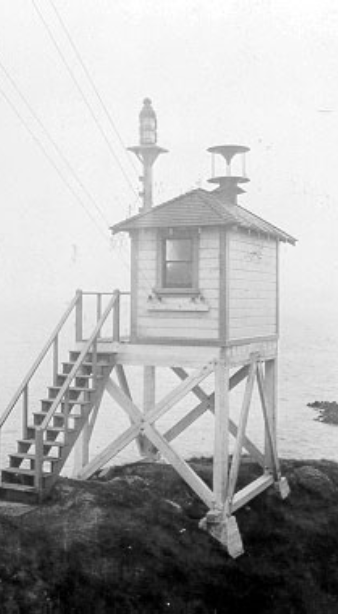 Point Blunt Light, San Francisco Bay, California
Point Blunt Light, San Francisco Bay, California
Point Blunt Light is a lighthouse located on Angel Island. The lighthouse was first constructed in 1915 and was eventually automated in 1976. The lighthouse is operated by U.S. Coast Guard.
Point Reyes Lighthouse, Gulf of the Farallones, California
 Point Reyes Light Station is a lighthouse located off the coast of California, north of San Jose. The lighthouse was originally constructed in 1970 and was automated approximately 100 years later. The lighthouse has a focal height of 265 feet and a range of 21 nautical miles. The lighthouse was used as a location for the 1980 John Carpenter film The Fog.
Point Reyes Light Station is a lighthouse located off the coast of California, north of San Jose. The lighthouse was originally constructed in 1970 and was automated approximately 100 years later. The lighthouse has a focal height of 265 feet and a range of 21 nautical miles. The lighthouse was used as a location for the 1980 John Carpenter film The Fog.
Junior’s time to shine
Is now the time? Finally, after years of underperformance, are junior miners finally going to have their day?
This chart of Crescat Capital follows the major gold miners through the ETF GDX and junior gold miners through the ETF GDXJ. The chart tracks the ratio of the two ETFs.
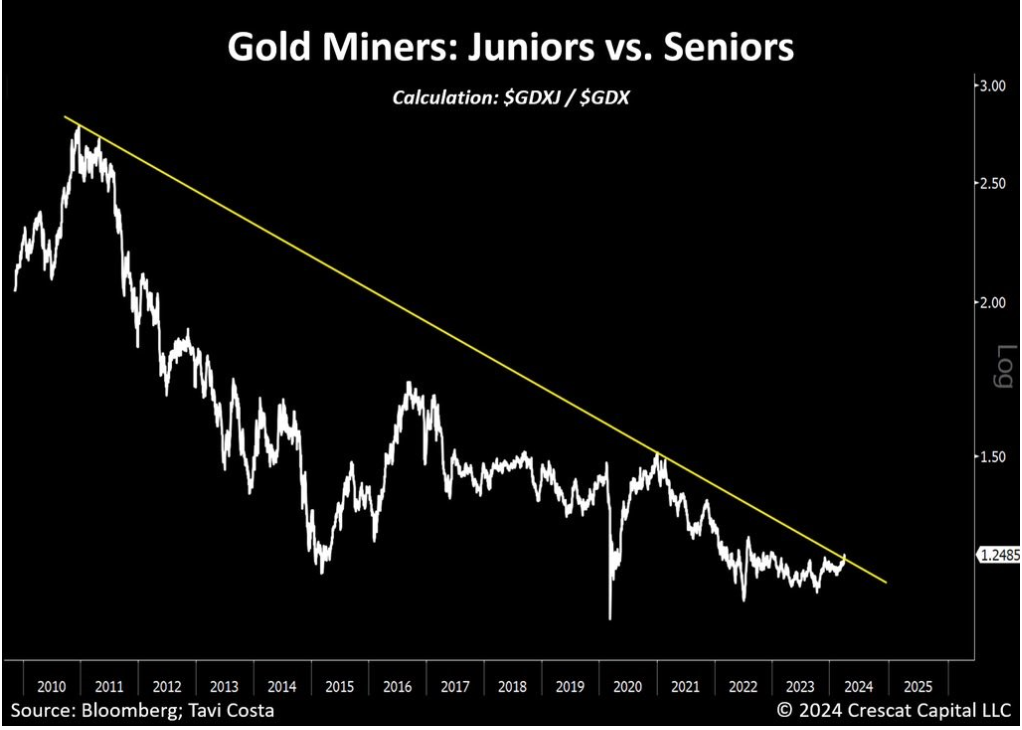
The chart above looks like it is about to break out above a negative trend line that the relationship has traded under for the last 15 years. A major breakout would mean junior miners are outperforming major miners in the gold industry.
This chart is not an exact science but reflects some catch-up potential from the juniors.
The poke-up above the yellow line is a healthy sign that the recent runup in precious metals is starting to propel the riskier segments of the industry as they begin to outperform the established large-cap miners. This move also reflects the sentiment of investors as they begin to warm up to miners due to record-level gold prices.
Nvidia faces competition
Intel unveiled its new AI accelerator chip on Tuesday, the Gaudi 3. The company claimed that its chip would be faster and more efficient than Nvidia’s H100 GPUs, and highly competitive with Nvidia’s newly unveiled Blackwell class GPUs.
Gaudi 3 chips will start shipping at the end of this year and will replace Intel’s Gaudi 2 chips. Intel announced that they already have commitments from four AI servers to build Gaudi 3-based systems. The companies that Intel has commitments from are Dell, Hewlett-Packard, Super Micro Computer and Lenovo.
Intel announced that the Gaudi 3 is up to 1.7 times faster than the Nvidia H10 at training large language models, and up to 1.3 times faster for inferencing than the Nvidia H200. The company also says that Gaudi 3 is up to 2.3 times more power efficient than the Nvidia H100 at running large-language models.
Intel management was asked after the announcement about their new product competing with the newly launched Nvidia Blackwell chips, responding that they believe Intel will be highly competitive with the Nvidia Blackwell line.
These artificial intelligence moves by Intel are critical. The company is looking to reinvent itself as the leader in sophisticated chip technology while building out its manufacturing capabilities globally.
The reinvention by Intel is quite pricey – Intel announced earlier this month a $7 billion operating loss for 2023 which sunk Intel shares. Intel shares have slumped over the last year while Nvidia and other chip producers have seen their shares multiply in value.
Intel is putting its AI systems forward as an alternative to Nvidia’s offerings claiming an open-source approach that will allow customers to use the services and software that they want.
Nvidia is the leader in overall AI tech. Intel is making a bet that large enterprises will remain weary of sticking with one source for their high-value AI needs.
Nvidia shares dropped approximately 2% on this announcement from Intel. However, Nvidia shares continue to outperform Intel shares by a wide margin over the last 12-18 months.
Saying Nvidia will be the Tesla of AI chips is a fair statement. The leader in a new marketplace (for Tesla EVs) that will see numerous new entrants (new companies like Rivian, Lucid, Fisker) and established companies (GM, Ford) that will also compete for market share. Regardless, the industry will be more competitive in five years than it is today. Making bets outside of Nvidia might be the best path forward right now, especially with the run that Nvidia shares have been on, and the elevated valuation that Nvidia shares trade at.
Either way, a quickly evolving industry that we are embracing as investors.
March CPI
On Wednesday morning, the U.S. Bureau of Labour Statistics released March’s inflation numbers, and it’s safe to say investors were more than likely frustrated.
Inflation for March came in hotter than expected, on a monthly and year-over-year basis.
Inflation rose 0.4% versus a consensus estimate of 0.3% in March. Year over year, prices rose by 3.5% versus an estimate of 3.4%.
Shelter and gasoline prices drove over half the gains of the CPI. The costs of services also jumped more than expected and are up 5.4% over the last year. The rotation from goods to services is real, position yourselves accordingly.
However, the core CPI also beat economist expectations. Sticky price increases remain a problem for consumers, investors, and the FED.
These surprise inflation beats for March likely will delay interest rate cuts yet again. The FED has already pushed back interest rate cuts throughout the early months of this year and will more than likely continue to do so if inflation remains a problem in the U.S. economy.
If you look back in time to last fall, it was consensus that we would start getting interest rate cuts in March, maybe February, and there would be 6+ cuts from the FED through 2024. Fast forward to now, and the FED kept interest rates in place at their March decision and are expected to do the same at their May, and June meetings. These prolonged delays (in interest rate cuts) could continue through the summer if inflation remains a problem. If rates stay in place through the summer, a rate cut in the fall could be viewed as very partisan as the U.S. heads to the polls for a Presidential rematch of Trump and Biden.
According to the CME Group, traders have pushed the first rate cut all the way out to September, quite a dramatic change in just a few months.
Either way, Powell and the FED seem to have gotten themselves into a bind. Bullish investors who believe they deserve rate cuts, and sticky inflation that is impacting the spending of Americans.
Markets moved lower on this data release on Wednesday as yields and the U.S. dollar spiked.
We have not been caught off guard by inflation accelerating. We have been noting that inflation today and through the next few years could mirror inflation from the 1970s where there were 3 different waves of price increases.
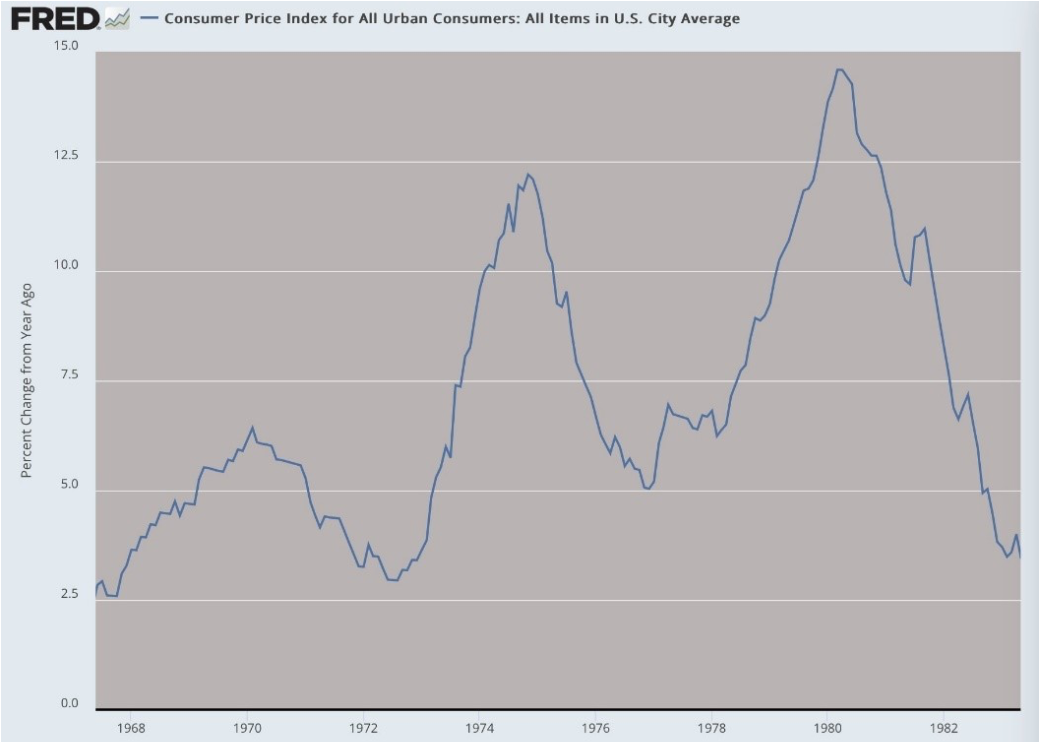
Will the 2020s follow a similar path? We are not quite sure but think inflation will stay elevated relative to historical averages for the foreseeable future.
MacNicol & Associates Asset Management has positioned clients accordingly for higher inflation with real assets like real estate, precious metals and energy exposure through equity markets.
However, we would remind our readers and investors that even when CPI rates slow down and reach that 2% per year target, prices will never return to their old normal. According to Charlie Bilelo, prices are 11% higher today than if inflation had moved by 2% since January 2020. In other words, if we never got this 2–4-year inflationary period, prices would be approximately 10% lower today.
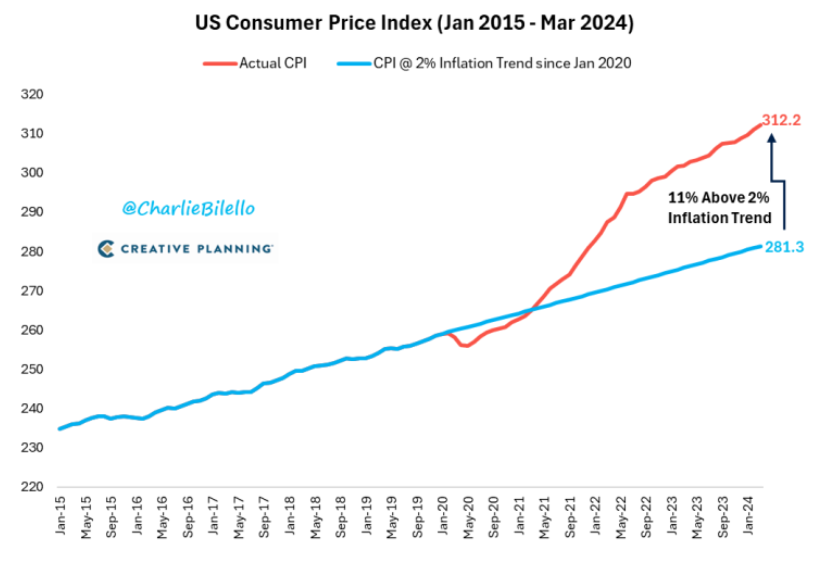
Inflation hedge
Costco members are piling into gold more than any other group in North America. According to Wells Fargo, Costco members are purchasing between $100-200 million a month in gold from the retail giant. Quite the product add for Costco at the right time, we must say. What can’t Costco do?

Gold prices reaching record levels also probably help the demand.
We wonder if Costco members are reading this publication or following the buying trends of global Central Banks like we are. Central Banks, Costco members, and MacNicol & Associates Asset Management investors continue to pile into the store hold of value, the inflation hedge that gold represents.
Expect higher prices moving forward, especially as inflation remains hot.
Chinese crash
As Chinese stocks have moved up in recent weeks, one Chinese company did the complete opposite on Wednesday.
A Chinese cement maker, China Tianrui Group Cement Co. saw its shares plunge by
99.5% in 15 minutes on Wednesday. The Hong Kong-listed company saw its shares
plunge from $5 a share to $0.05 a share in a matter of minutes. This cut the company’s
market capitalization from $1.8 billion to $18 million. During this sell-off 281 million
shares changed hands, one-third of the firm’s free float. Take a look at the chart, it is quite remarkable:
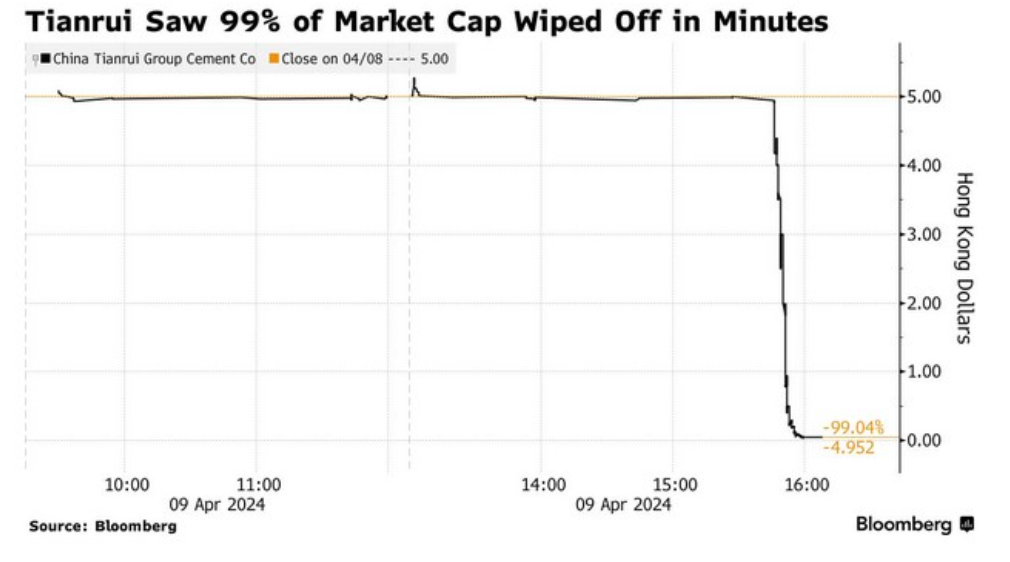
Tianrui Group’s sell-off is a reminder to North American investors of the risks associated with certain Chinese investments. Many Chinese firms including Tianrui Group also utilize shares as debt collateral. Tianrui’s controlling shareholder and his spouse own 70% of the company according to a filing in January. In January, the company also pledged 97 million shares to secure a 12-month loan.
The company’s investor relations department could not be reached for comment after the dramatic drop.
Tianrui has struggled in recent years as the Chinese housing market has slowed down. Tianrui had a net loss of $88 million last year, versus a net profit of $62 million in 2022 (U.S. dollars).
We will remind our readers to beware of buying in China, we think the risks are way too high to consider investing. Tianrui’s problem does not even seem to be political, it seems like their financial house of cards is about to collapse.
Chinese economic outlook
Ratings agency Fitch revised their sovereign credit rating for China on Tuesday. Fitch cited increased risks to China’s finances as it faces numerous economic challenges. The outlook downgrade follows Moody’s move in December as Beijing looks to ramp up fiscal and monetary support post-lockdowns.
The outlook from Fitch changed from stable to negative for China.
China has quietly created a debt accumulation problem that seems to be very problematic. Public debt has more than doubled since the Great Financial Crisis (2008 to 2009) and is heading above 100% of gross domestic product. More importantly, total debt has ballooned from 133% of GDP in 2008 to 272% in 2022. The number is expected to have risen in 2023 and is expected to continue to increase moving forward.
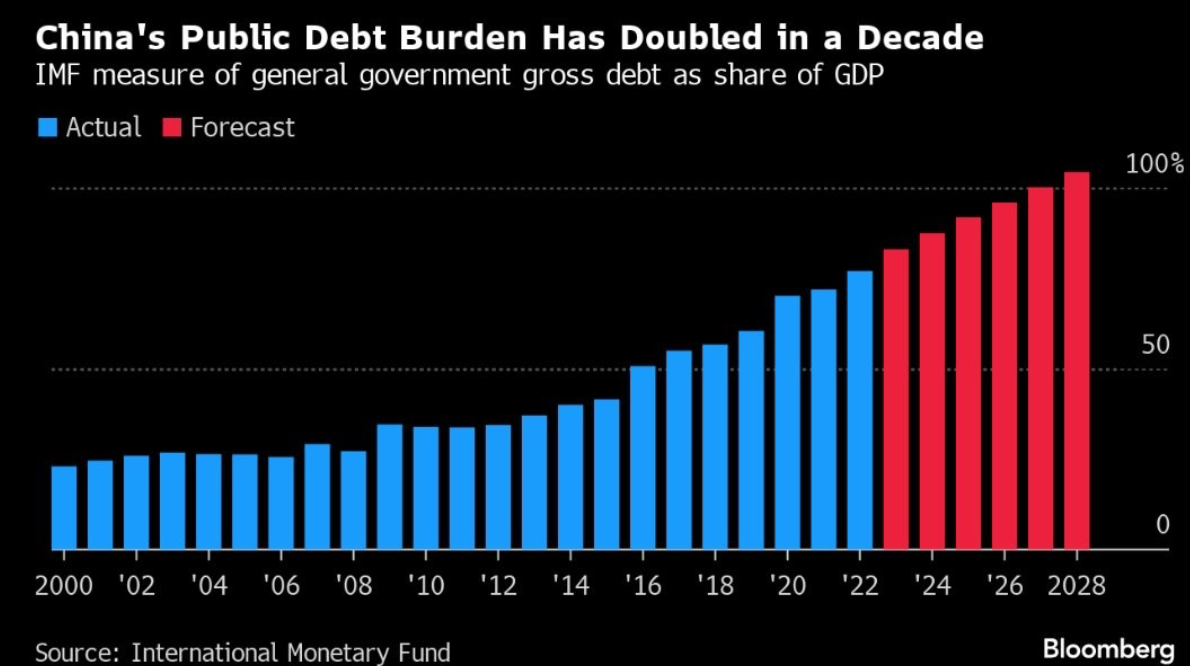
Fitch forecasts that the general government deficit will rise to 7.1% of gross domestic product in 2024, from 5.8% in 2023. While it lowered its outlook from “stable”.
The CCP will have to be careful in balancing fiscal support, debt levels, and economic growth.
Wall Streeter heads to The Masters
In honour of Masters week, we wanted to share an interesting story the Wall Street Journal published this week.
The story follows, Stewart Hagestad, a financial professional working on Wall Street for BDT & MSD Partners, an investment and advisory firm that has $60 billion in AUM. Hagestad is 33 and qualified for The Masters as an amateur.
Most amateurs in The Masters and other tournaments are young collegiate players who dream of playing on the PGA Tour, Hagestad is an exception.
Hagestad has reverse-engineered the system. He works in finance and reaps the rewards of being an elite-level amateur golfer. Hagestad qualified and played in 6 majors before this weekend and competed at The Masters first in 2017, finishing tied for 36th, he also played in 2022 and missed the cut. Hagestad qualified for this year’s Masters tournament by winning last year’s U.S. Mid-Amateur, a competition for players 25 and above who are considered amateurs.
Hagestad is the 11th-ranked amateur in the world. Everyone else in the top 15 is at least a decade younger than him.

Hagestad has competed in the Masters twice before, we will have to see how well he does in his third appearance.
MacNicol & Associates Asset Management April 12, 2024







